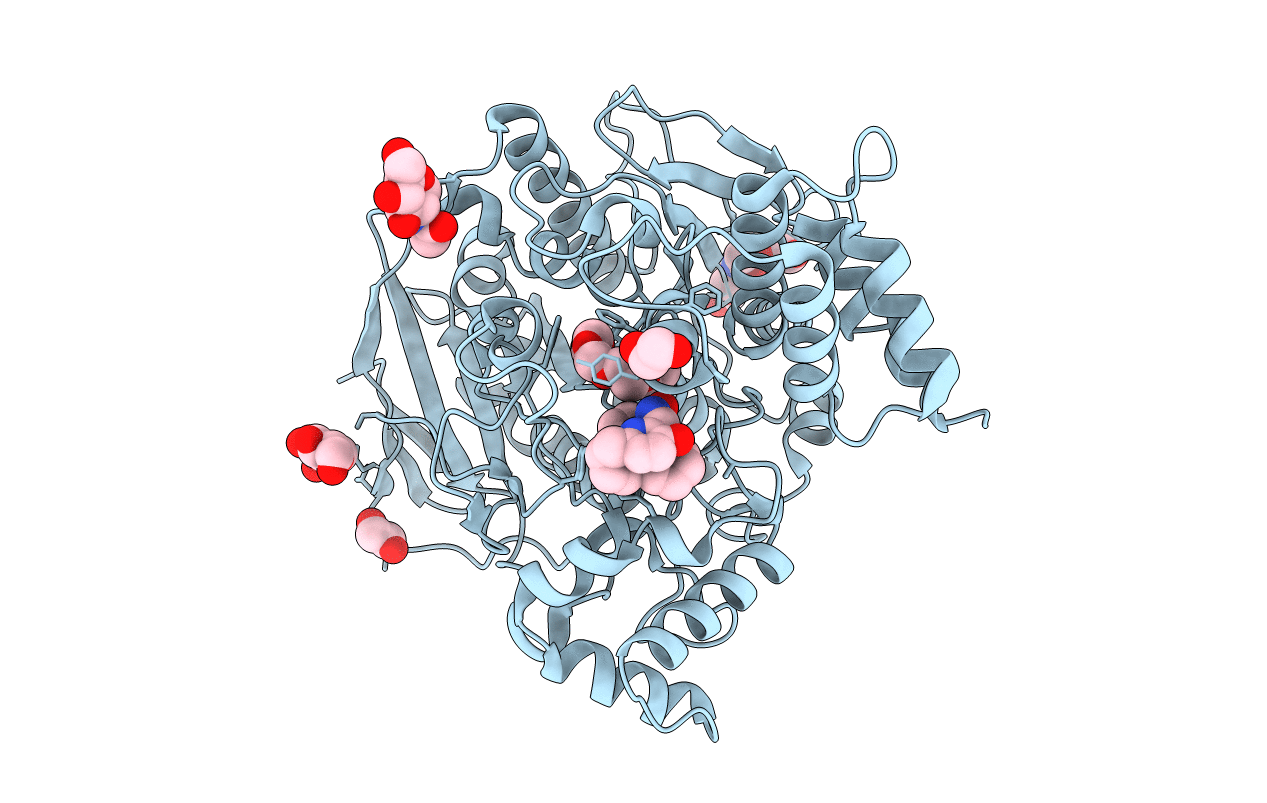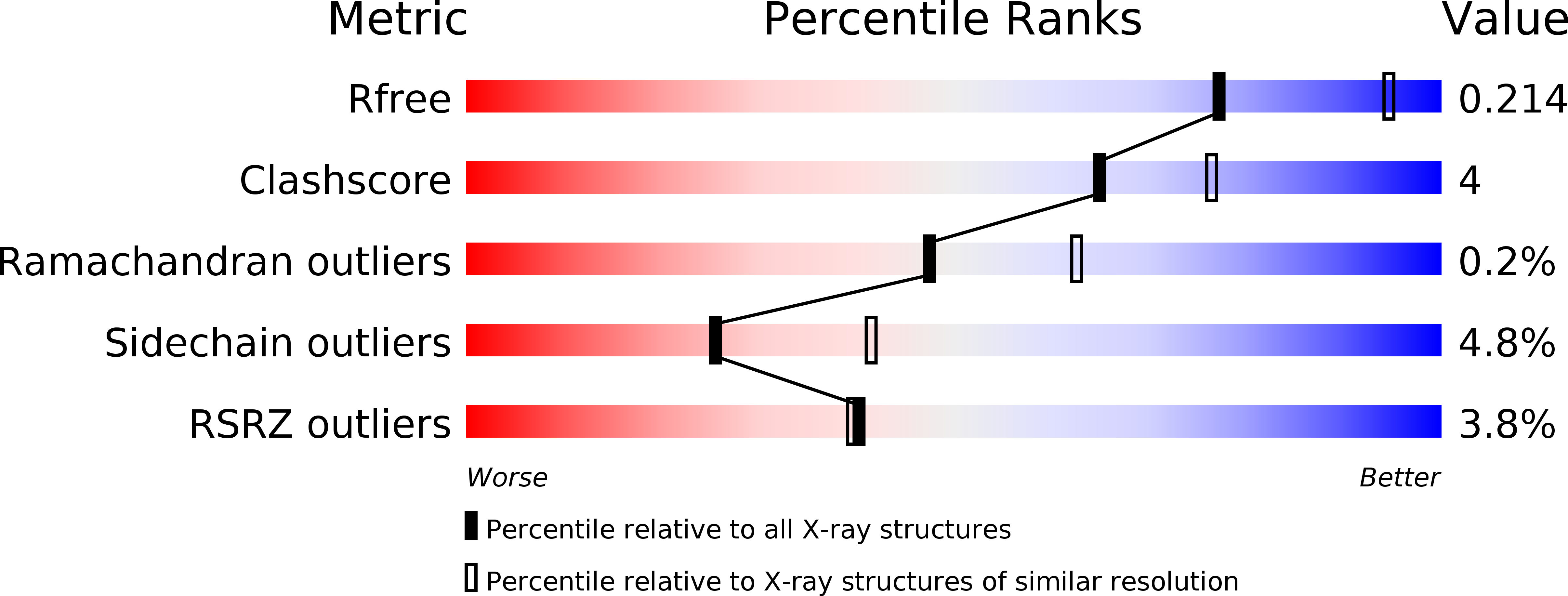
Deposition Date
2018-01-25
Release Date
2018-08-29
Last Version Date
2025-04-09
Entry Detail
PDB ID:
6FLD
Keywords:
Title:
Carbamylated T. californica acetylcholineterase bound to uncharged hybrid reactivator 1
Biological Source:
Source Organism:
Tetronarce californica (Taxon ID: 7787)
Host Organism:
Method Details:
Experimental Method:
Resolution:
2.40 Å
R-Value Free:
0.21
R-Value Work:
0.18
R-Value Observed:
0.18
Space Group:
P 31 2 1


